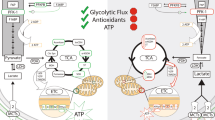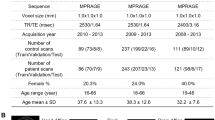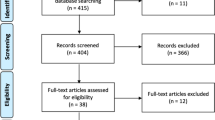Abstract
Translational research is urgently needed to turn basic scientific discoveries into widespread health gains and nowhere are these needs greater than in conditions such as schizophrenia and other psychotic disorders. In this article, we discuss one type of translational research—called T1—which is needed to take advantage of developments in the basic neurosciences and translate them into more efficacious diagnostic, preventive, and therapeutic interventions. However, ensuring that interventions from T1 research actually benefit patients will require a second form of translational research—called T2—to turn innovations into everyday clinical practice and health decision-making. Recent examples of T1 and T2 research in schizophrenia and other psychotic disorders as well as strategies for better linking T1 and T2 research agendas are covered.
Similar content being viewed by others
Log in or create a free account to read this content
Gain free access to this article, as well as selected content from this journal and more on nature.com
or
References
Alexopoulos GS, Streim J, Carpenter D, Docherty JP (2004). Using antipsychotic agents in older patients. J Clin Psychiatry 65 (Suppl 2): 5–99; discussion 100–102; quiz 103–104.
Briesacher BA, Limcangco MR, Simoni-Wastila L, Doshi JA, Levens SR, Shea DG et al (2005). The quality of antipsychotic drug prescribing in nursing homes. Arch Intern Med 165: 1280–1285.
Brookhart MA, Rassen JA, Wang PS, Dormuth C, Mogun H, Schneeweiss S (2007). Evaluating the validity of an instrumental variable study of neuroleptics: can between-physician differences in prescribing patterns be used to estimate treatment effects? Med Care 45 (10 Suppl 2): S116–S122.
Cannon TD, Cadenhead K, Cornblatt B, Woods SW, Addington J, Walker E et al (2008). Prediction of psychosis in youth at high clinical risk: a multisite longitudinal study in North America. Arch Gen Psychiatry 65: 28–37. Recent work that identifies several factors that could be potential targets for early intervention.
Chan YC, Pariser SF, Neufeld G (1999). Atypical antipsychotics in older adults. Pharmacotherapy 19: 811–822.
Congressional Budget Office (December 2007). Research on the comparative effectiveness of medical treatments: issues and options for an expanded federal role. The Congress of the United States. Publication No.2975. Washington, DC.
Conley RR, Buchanan RW (1997). Evaluation of treatment-resistant schizophrenia. Schizophr Bull 23: 663–674.
Dewa CS, Remington G, Herrmann N, Fearnley J, Goering P (2002). How much are atypical antipsychotic agents being used, and do they reach the populations who need them? A Canadian experience. Clin Ther 24: 1466–1476.
Fenton WS, Stover EL, Insel TR (2003). Breaking the log-jam in treatment development for cognition in schizophrenia: NIMH perspective. Psychopharmacology (Berl) 169: 365–366.
Foundation for the National Institutes of Health. The Biomarkers Consortium. http://www.biomarkersconsortium.org/. Accessed 11 September 2008.
Frazier JA, McClellan J, Findling RL, Vitiello B, Anderson R, Zablotsky B et al (2007). Treatment of Early-Onset Schizophrenia Spectrum Disorders (TEOSS): demographic and clinical characteristics. J Am Acad Child Adolesc Psychiatry 46: 979–988.
Freedman R, Olincy A, Buchanan RW, Harris JG, Gold JM, Johnson L et al (2008). Initial phase 2 trial of a nicotinic agonist in schizophrenia. Am J Psychiatry 165: 1040–1047. Example of an early phase clinical trial that sheds light on a promising new therapeutic target in schizophrenia.
Glynn RJ, Brookhart MA, Stedman M, Avorn J, Solomon DH (2007). Design of cluster-randomized trials of quality improvement interventions aimed at medical care providers. Med Care 45 (10 Suppl 2): S38–S43.
Gold MR, Siegel JE, Russell Lb, Weinstein MC (1996). Cost-Effectiveness in Health and Medicine. Oxford University Press: New York.
Heres S, Davis J, Maino K, Jetzinger E, Kissling W, Leucht S (2006). Why olanzapine beats risperidone, risperidone beats quetiapine, and quetiapine beats olanzapine: an exploratory analysis of head-to-head comparison studies of second-generation antipsychotics. Am J Psychiatry 163: 185–194.
Honer WG, Thornton AE, Chen EY, Chan RC, Wong JO, Bergmann A et al (2006). Clozapine alone versus clozapine and risperidone with refractory schizophrenia. N Engl J Med 354: 472–482. One of the few sources of experimental data on the effectiveness of antipsychotic medication polypharmacy for schizophrenia.
Honer WG, Thornton AE, Sherwood M, MacEwan GW, Ehmann TS, Williams R et al (2007). Conceptual and methodological issues in the design of clinical trials of antipsychotics for the treatment of schizophrenia. CNS Drugs 21: 699–714.
Honigfeld G, Arellano F, Sethi J, Bianchini A, Schein J (1998). Reducing clozapine-related morbidity and mortality: 5 years of experience with the Clozaril National Registry. J Clin Psychiatry 59 (Suppl 3): 3–7.
Insel TR (2006a). Translational research in the decade of discovery. Horm Behav 50: 504–505.
Insel TR (2006b). Tribute to Wayne Fenton, MD (1953–2006). Schizophr Res 88: 1–2.
Jeste DV, Sable JA, Salzman C (2005). Treatment of late-life disordered behavior, agitation, and psychosis. In: Salzman C (ed). Clinical Geriatric Psychopharmacology, 4th edn. Lippincott, Williams & Wilkins: Philadelphia. pp 129–195.
Kane J, Honigfeld G, Singer J, Meltzer H (1988). Clozapine for the treatment-resistant schizophrenic. A double-blind comparison with chlorpromazine. Arch Gen Psychiatry 45: 789–796. Among the first and most important pieces of clinical evidence revealing the superiority of clozapine for refractory schizophrenia.
Kindermann SS, Dolder CR, Bailey A, Katz IR, Jeste DV (2002). Pharmacological treatment of psychosis and agitation in elderly patients with dementia: four decades of experience. Drugs Aging 19: 257–276.
Krystal JH, D’Souza DC, Mathalon D, Perry E, Belger A, Hoffman R (2003). NMDA receptor antagonist effects, cortical glutamatergic function, and schizophrenia: toward a paradigm shift in medication development. Psychopharmacology (Berl) 169: 215–233.
Kuehn BM (2005). FDA warns antipsychotic drugs may be risky for elderly. JAMA 293: 2462.
Lawlor BA (2004). Behavioral and psychological symptoms in dementia: the role of atypical antipsychotics. J Clin Psychiatry 65 (Suppl 11): 5–10.
Leucht S, Pitschel-Walz G, Abraham D, Kissling W (1999). Efficacy and extrapyramidal side-effects of the new antipsychotics olanzapine, quetiapine, risperidone, and sertindole compared to conventional antipsychotics and placebo. A meta-analysis of randomized controlled trials. Schizophr Res 35: 51–68.
Lewis DA, Pierri JN, Volk DW, Melchitzky DS, Woo TU (1999). Altered GABA neurotransmission and prefrontal cortical dysfunction in schizophrenia. Biol Psychiatry 46: 616–626.
Lieberman JA, Phillips M, Gu H, Stroup S, Zhang P, Kong L et al (2003). Atypical and conventional antipsychotic drugs in treatment-naive first-episode schizophrenia: a 52-week randomized trial of clozapine vs chlorpromazine. Neuropsychopharmacology 28: 995–1003.
Lieberman JA, Saltz BL, Johns CA, Pollack S, Borenstein M, Kane J (1991). The effects of clozapine on tardive dyskinesia. Br J Psychiatry 158: 503–510.
Lieberman JA, Stroup TS, McEvoy JP, Swartz MS, Rosenheck RA, Perkins DO et al (2005). Effectiveness of antipsychotic drugs in patients with chronic schizophrenia. N Engl J Med 353: 1209–1223. A landmark large practical clinical trial that shed light on the comparative effectiveness of first and second generation antipsychotic medications.
Maixner SM, Mellow AM, Tandon R (1999). The efficacy, safety, and tolerability of antipsychotics in the elderly. J Clin Psychiatry 60 (Suppl 8): 29–41.
March JS, Silva SG, Compton S, Shapiro M, Califf R, Krishnan R (2005). The case for practical clinical trials in psychiatry. Am J Psychiatry 162: 836–846.
McClellan J, Sikich L, Findling RL, Frazier JA, Vitiello B, Hlastala SA et al (2007). Treatment of early-onset schizophrenia spectrum disorders (TEOSS): rationale, design, and methods. J Am Acad Child Adolesc Psychiatry 46: 969–978.
McDougle CJ, Scahill L, McCracken JT, Aman MG, Tierney E, Arnold LE et al (2000). Research Units on Pediatric Psychopharmacology (RUPP) Autism Network. Background and rationale for an initial controlled study of risperidone. Child Adolesc Psychiatr Clin N Am 9: 201–224.
Meltzer HY, Alphs L, Green AI, Altamura AC, Anand R, Bertoldi A et al (2003). Clozapine treatment for suicidality in schizophrenia: International Suicide Prevention Trial (InterSePT). Arch Gen Psychiatry 60: 82–91.
Meltzer HY, Fatemi H (1995). Suicide in schizophrenia: the effect of clozapine. Clin Neuropharmacol 18: S18–S24.
Meltzer HY, Okayli G (1995). Reduction of suicidality during clozapine treatment of neuroleptic-resistant schizophrenia: impact on risk-benefit assessment. Am J Psychiatry 152: 183–190.
Moghaddam B (2004). Targeting metabotropic glutamate receptors for treatment of the cognitive symptoms of schizophrenia. Psychopharmacology (Berl) 174: 39–44.
Murphy SA, Oslin DW, Rush AJ, Zhu J (2007). Methodological challenges in constructing effective treatment sequences for chronic psychiatric disorders. Neuropsychopharmacology 32: 257–262.
Perlis RH, Ganz DA, Avorn J, Schneeweiss S, Glynn RJ, Smoller JW et al (2005). Pharmacogenetic testing in the clinical management of schizophrenia: a decision-analytic model. J Clin Psychopharmacol 25: 427–434.
Polinski JM, Wang PS, Fischer MA (2007). Medicaid's prior authorization program and access to atypical antipsychotic medications. Health Aff (Millwood) 26: 750–760.
Rosenheck RA, Leslie DL, Sindelar JL, Miller EA, Tariot PN, Dagerman KS et al (2007). Cost–benefit analysis of second-generation antipsychotics and placebo in a randomized trial of the treatment of psychosis and aggression in Alzheimer disease. Arch Gen Psychiatry 64: 1259–1268.
PROMIS http://www.nihpromis.org/default.aspx. Accessed 18 March 2008.
Sachs GS, Nierenberg AA, Calabrese JR, Marangell LB, Wisniewski SR, Gyulai L et al (2007). Effectiveness of adjunctive antidepressant treatment for bipolar depression. N Engl J Med 356: 1711–1722.
Schatzberg A, Nemeroff C (2006). Essentials of Clinical Psychopharmacology, 2nd edn. American Psychiatric Publishing Inc. Washington, DC.
Schneeweiss S, Maclure M, Walker AM, Grootendorst P, Soumerai SB (2001). On the evaluation of drug benefits policy changes with longitudinal claims data: the policy maker's versus the clinician's perspective. Health Policy 55: 97–109.
Schneeweiss S, Setoguchi S, Brookhart A, Dormuth C, Wang PS (2007). Risk of death associated with the use of conventional versus atypical antipsychotic drugs among elderly patients. CMAJ 176: 627–632.
Schneider LS, Dagerman KS, Insel P (2005). Risk of death with atypical antipsychotic drug treatment for dementia: meta-analysis of randomized placebo-controlled trials. JAMA 294: 1934–1943. An important meta-analysis that revealed the risk of mortality from atypical antipsychotic medication use in elderly patients with dementia.
Schneider LS, Tariot PN, Dagerman KS, Davis SM, Hsiao JK, Ismail MS et al (2006). Effectiveness of atypical antipsychotic drugs in patients with Alzheimer's disease. N Engl J Med 355: 1525–1538.
Shorr RI, Fought RL, Ray WA (1994). Changes in antipsychotic drug use in nursing homes during implementation of the OBRA-87 regulations. JAMA 271: 358–362.
Sink KM, Holden KF, Yaffe K (2005). Pharmacological treatment of neuropsychiatric symptoms of dementia: a review of the evidence. JAMA 293: 596–608.
Soumerai SB, McLaughlin TJ, Ross-Degnan D, Casteris CS, Bollini P (1994). Effects of a limit on Medicaid drug-reimbursement benefits on the use of psychotropic agents and acute mental health services by patients with schizophrenia. N Engl J Med 331: 650–655.
Strong C (2005). Antipsychotic use in elderly patients with dementia prompts new FDA warning. Neuropsychiatry Rev 6: 1–17.
Sturmer T, Glynn RJ, Rothman KJ, Avorn J, Schneeweiss S (2007). Adjustments for unmeasured confounders in pharmacoepidemiologic database studies using external information. Med Care 45 (10 Suppl 2): S158–S165.
Sung NS, Crowley Jr WF, Genel M, Salber P, Sandy L, Sherwood LM et al (2003). Central challenges facing the national clinical research enterprise. JAMA 289: 1278–1287.
Tariot PN (1999). The older patient: the ongoing challenge of efficacy and tolerability. J Clin Psychiatry 60 (Suppl 23): 29–33.
Trivedi MH, Fava M, Wisniewski SR, Thase ME, Quitkin F, Warden D et al (2006). Medication augmentation after the failure of SSRIs for depression. N Engl J Med 354: 1243–1252.
Tunis SR, Stryer DB, Clancy CM (2003). Practical clinical trials: increasing the value of clinical research for decision making in clinical and health policy. JAMA 290: 1624–1632.
US Food and Drug Administration. FDA Public Health Advisory: Deaths with antipsychotics in elderly patients with behavioral disturbances. Available at: www.fda.gov/cder/drug/advisory/antipsychotics.htm. Accessed 15 April 2005.
Wahlbeck K, Cheine M, Essali A, Adams C (1999). Evidence of clozapine's effectiveness in schizophrenia: a systematic review and meta-analysis of randomized trials. Am J Psychiatry 156: 990–999.
Walker AM, Lanza LL, Arellano F, Rothman KJ (1997). Mortality in current and former users of clozapine. Epidemiology 8: 671–677.
Wang PS, Aguilar-Gaxiola S, Alonso J, Angermeyer MC, Borges G, Bromet EJ et al (2007). Use of mental health services for anxiety, mood, and substance disorders in 17 countries in the WHO world mental health surveys. Lancet 370: 841–850.
Wang PS, Demler O, Kessler RC (2002a). Adequacy of treatment for serious mental illness in the United States. Am J Public Health 92: 92–98.
Wang PS, Ganz DA, Benner JS, Glynn RJ, Avorn J (2004). Should clozapine continue to be restricted to third-line status for schizophrenia? A decision-analytic model. J Ment Health Policy Econ 7: 77–85.
Wang PS, Lane M, Olfson M, Pincus HA, Wells KB, Kessler RC (2005a). Twelve-month use of mental health services in the United States: results from the National Comorbidity Survey Replication. Arch Gen Psychiatry 62: 629–640.
Wang PS, Schneeweiss S, Avorn J, Fischer MA, Mogun H, Solomon DH et al (2005b). Risk of death in elderly users of conventional vs atypical antipsychotic medications. N Engl J Med 353: 2335–2341. An example of promising data analysis methods that may be needed to address potential bias in observational studies.
Wang PS, Walker AJ (2002b). The pharmacoepidemiology of psychiatric medications. In: Tsuang MT, Tohen M (eds). Textbook in Psychiatric Epidemiology, 2nd edn. Wiley: New York. pp 181–194.
Wang PS, West JC, Tanielian T, Pincus HA (2000). Recent patterns and predictors of antipsychotic medication regimens used to treat schizophrenia and other psychotic disorders. Schizophr Bull 26: 451–457.
Westfall JM, Mold J, Fagnan L (2007). Practice-based research—‘Blue Highways’ on the NIH roadmap. JAMA 297: 403–406.
Woolf SH (2008). The meaning of translational research and why it matters. JAMA 299: 211–213.
Woolf SH, Johnson RE (2005). The break-even point: when medical advances are less important than improving the fidelity with which they are delivered. Ann Fam Med 3: 545–552.
Zerhouni EA (2005). US biomedical research: basic, translational, and clinical sciences. JAMA 294: 1352–1358.
Author information
Authors and Affiliations
Corresponding author
Additional information
DISCLOSURE/CONFLICT OF INTEREST
Dr Wagner reports holding stock in Johnson and Johnson. Otherwise, the authors declare that, except for income received from their primary employer, no financial support or compensation has been received from any individual or corporate entity over the past 3 years for research or professional service and there are no personal financial holdings that could be perceived as constituting a potential conflict of interest. The views and opinions expressed are those of the authors and should not be construed to represent the views of any sponsoring organization, agencies, or the US Government.
Rights and permissions
About this article
Cite this article
Wang, P., Heinssen, R., Oliveri, M. et al. Bridging Bench and Practice: Translational Research for Schizophrenia and Other Psychotic Disorders. Neuropsychopharmacol 34, 204–212 (2009). https://doi.org/10.1038/npp.2008.170
Received:
Revised:
Accepted:
Published:
Issue date:
DOI: https://doi.org/10.1038/npp.2008.170



